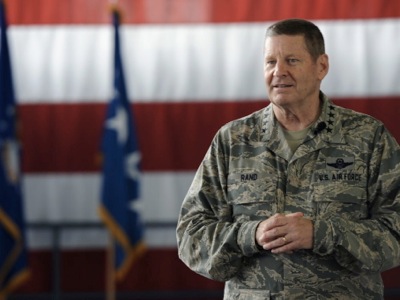The US Generals: “the Bomb for Peace”
Just two days before the North Korean missile test set off the nuclear alarm across the world, the journal, Politico, featured an article entitled “Why the USA is right to invest in nuclear weapons” [1]. The article was not authored by a pundit, but two generals, the controlling minds behind three quarters of the US nuclear forces: Dave Goldfein, Chief of Staff of the Air Force, and Robin Rand, Head of the Air Command for Global Attack.
They declare that, “though it may seen counterintuitive, nuclear weapons are a critical tool for global peace”. They think that this is demonstrated by the fact that, since the advent of the nuclear age, great wars have stopped. They claim that it is therefore essential to keep our bombings and nuclear missiles at optimal efficiency.
Today, the United States must proceed to upgrade its nuclear forces since it is faced with:
“potential enemies that are aggressively modernizing and expanding their nuclear forces and increasingly wanting to assert themselves”.
The Generals cite “the explicit threats of North Korea”; yet it is clear what they are really referring to: Russia and China. Thus they warn in a menacing tone:
“Our potential enemies have to know that our nation’s leadership will always take tough decisions, necessary to protect and to ensure the survival of the American people and its allies”.
In other words, it is ready to fight a Third World War, a nuclear one, which noone, in actual fact, would manage to survive. So they throw back a dogmatic request to the Trump Administration:
“The United States must maintain its commitment to recapitalizing our nuclear forces”.
The commitment to which they are referring was not taken by that “barbarian at the gate”, Donald Trump, but by the dove-like Obama, who was mantled with a Nobel Prize for Peace in 2009 for his “vision of a world free of nuclear weapons and the work he carried out to reach this goal”. It was the Obama Administration that launched the biggest programme for nuclear re-armament at the end of the Cold War. The cost? Just around 1,000 billion dollars, which covers the construction costs of 12 new submarines for nuclear attack (each with 24 missiles capable of launching up to almost 200 nuclear heads), another 100 strategic bombers (each armed with around 20 missiles or nuclear bombs) and 400 intercontinental ballistic missiles with a land base (each with a powerful nuclear head).
Thus at the same time, the modernization of the current nuclear forces was launched with revolutionary technology, that Hans Kristensen of the Federation of American Scientists reports in the Bulletin of Atomic Scientists [2]: “triples the destructive power of the existing US ballistic missiles”, as if they were being planned to have the “capacity to fight and win a nuclear war disarming the enemies with a surprise first attack”.
Capacity which also includes an “anti-missile shield” to neutralize an enemy reprisal, such as the one the US is lining up in Europe against Russia, and South Korea against China. Consequently it is accelerating the race to nuclear weapons. Significant is the Russian decision to line up in 2018 a new inter- continental ballistic missile, the RS-28 Sarmat, with a range of up to 18,000 km, capable of transporting 10-15 nuclear heads that, falling into the atmosphere at hypersonic speed (more than 10 times the speed of sound), can manoeuvre to escape intercepting missiles, piercing the “shield”.
Translation
Anoosha Boralessa
Anoosha Boralessa
Source
Il Manifesto (Italy)
Il Manifesto (Italy)
[1] “Why the U.S. Is Right to Invest in Nuclear Weapons”, Dave Goldfein & Robin Rand, Politico, May 12th, 2017
[2] “How US nuclear force modernization is undermining strategic stability: The burst-height compensating super-fuze”, Hans M. Kristensen, Matthew McKinzie & Theodore A. Postol, Bulletin of Atomic Scientists, March 1st, 2017.









No comments:
Post a Comment